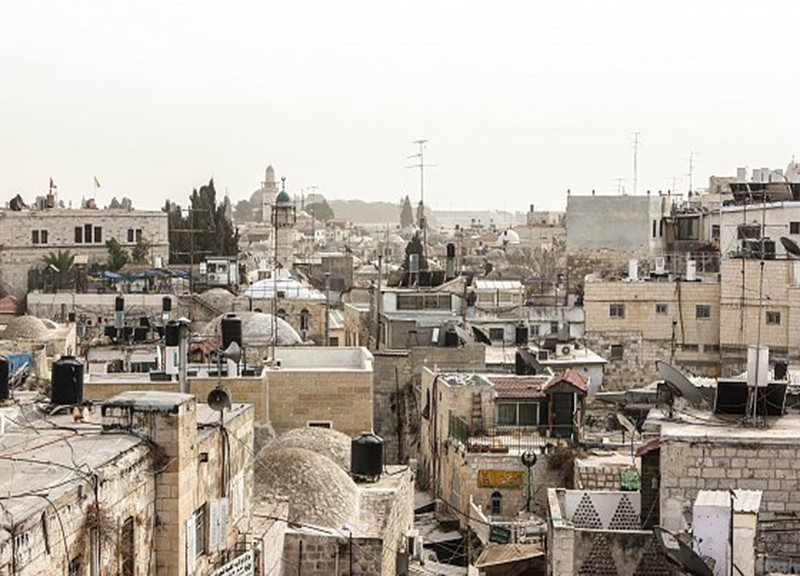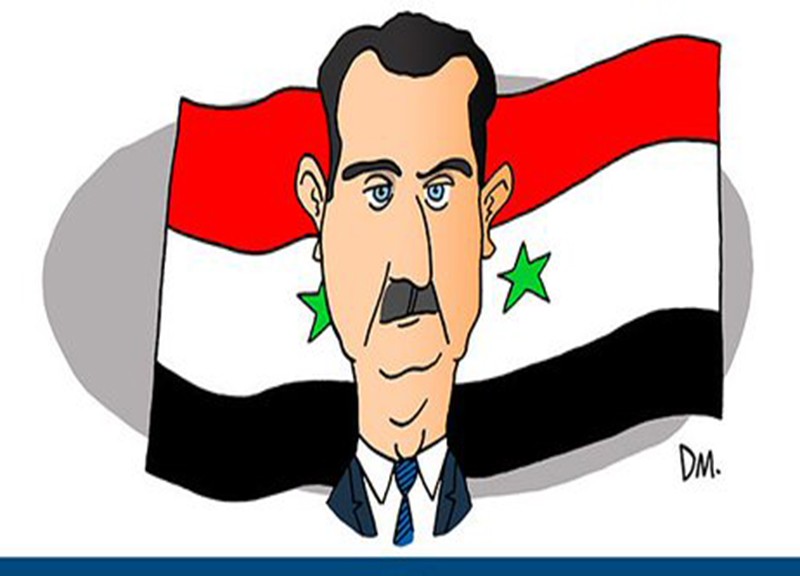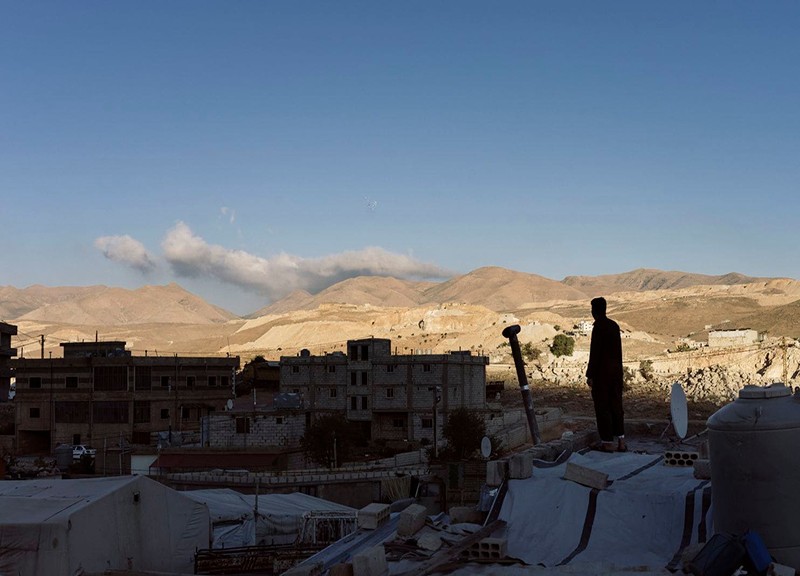
The Israeli town of Metula, near the Lebanese border, has become deserted.
Nearly eight months after being evacuated from region bordering Lebanon, more than 60,000 Israelis remain displaced
By Dov Lieber, WSJ
TEL AVIV—The day after Hamas’s Oct. 7 raid on southern Israel, rockets began raining down on Sem Elchadef’s small town bordering Lebanon in northern Israel. He decided to stay put, having weathered decades of such attacks since his childhood.
But when a guided missile fired by Hezbollah, the Lebanese militant and political group, smashed a truck outside his parents’ house roughly a week later, he headed south.
“When they start shooting missiles directly at people at homes, this is not safe anymore,” said the 54-year-old owner of a supermarket in Metula, once a popular tourist destination, now a ghost town. His family is renting a home near Tel Aviv.
Nearly eight months into the war, at least 60,000 Israelis who left their homes near Lebanon in October are still displaced, part of a broader wave of lives upended by the fighting across the region.
Hezbollah, a Hamas ally that has been designated a terrorist group by the U.S., has vowed to keep fighting until the war in Gaza comes to a halt. At least 60,000 Israelis who left their homes near Lebanon in October are still displaced.
They are now among the most vociferous protesters in Israel, pressuring their government to make the northern stretches of the country safe for return. Many believe a fullblown war is the only option.
They are skeptical about attempts to reach a diplomatic agreement with Hezbollah, which Israel and the United Nations say has flouted previous deals.
Days after Oct. 7, residents of northern Israel were evacuated out of fear that Hezbollah, far stronger in Lebanon than Hamas is in Gaza, could enact a long-threatened plan to invade northern Israel.
“If the war would’ve started on the northern border on Oct. 7, for sure my parents, smallest brother, his wife and children wouldn’t be here with us today,” Elchadef said. His parents’ home in Metula is roughly 100 yards from the border and exposed to Lebanon on three sides.
With a new school year approaching in September, some northern Israel residents have put down roots in their new locales, buying or renting new homes. Some in Israel fear the northern border could remain uninhabitable or extremely undesirable to live in for years. That would mark a strategic, economic and symbolic loss for Israel, a country the size of New Jersey that has invested heavily in building up civilian life outside the dense central region around Tel Aviv and Jerusalem.
Roughly one-third of all evacuees from northern Israel hail from Kiryat Shmona, whose population has fallen to just 3,000, from 24,000 before Oct. 7. Most of those who have stayed behind are civil servants including police officers, elderly residents who refuse to leave and those simply unable to leave, such as families of children with special needs, Mayor Avichai Stern said.
Stern said recent polling results show 40% of residents don’t plan to come back. Those were likely the wealthiest residents who could afford to move, he said. With each day that passes without any sign of change, he expects that number to increase.
Israeli and American officials say they hope that, once there is a break in the Gaza fighting, an agreement can be reached with Hezbollah to push the militants back from Israel’s border.
Many Israelis, including Stern, are skeptical that a deal with Hezbollah will be enough to ensure safety in the northernmost part of Israel.
Hezbollah was to disarm and move far from Israel’s border under the terms of U.N. Security Council resolution 1701, which brought an end to the war between Israel and Hezbollah in 2006. But Israeli officials say Hezbollah has instead amassed rockets and missiles there, along with thousands of battle-hardened infantrymen, while openly discussing plans to invade.
Between 2018 and early 2019, Israel’s military destroyed six cross-border tunnels stretching into Israel, believed to have been built by Hezbollah.
Since Oct. 8, Hezbollah has fired roughly 4,500 rockets and mortars into Israel, along with hundreds of antitank missiles and dozens of drones, the Israeli military said.
A Hezbollah official said Israel has been continuously violating U.N. Resolution 1701 with aerial, naval and land incursions into Lebanese territory. Israel has adopted a titfor-tat policy to Hezbollah’s attacks.
Prime Minister Benjamin Netanyahu said while touring the border region last week that Israel has “detailed, important, even surprising plans” to secure the area. He didn’t elaborate.
Liron Kruma, a falafel seller who joined a protest in northern Israel on Thursday, is one of 20,000 evacuees from the Lebanese border area still living in a government-subsidized hotel room.
Kruma, 48, considers himself open to coexisting with Palestinians and voted for the head of an Arab-Israeli party in the latest election. But when it comes to Hezbollah, he says he won’t trust any agreement. He says his government needs to demand that Lebanon raze all civilian communities within 3 miles of the border, or else Israel should do it themselves. It is the only way, he said, to ensure Hezbollah doesn’t return to the border under the guise of civilians.
Beyond the 60,000 Israelis who lived within the 3-milewide zone directly abutting the border with Lebanon and who were evacuated and offered financial assistance, many others in the general vicinity also fled after Oct. 7.
Liat Cohen-Raviv, 50, a mother of two who owns a management-consulting firm and lives in Metula, said Israel must do everything it can to make northern Israel a livable place, and that the country’s rapidly growing population requires as much land as possible.
“Thousands of terrorists jumping over a fence and going into our houses in the middle of the night is not an option,” she said.
In a poll released on Thursday by Israeli national broadcaster Kan, 46% of respondents said Israel should initiate a pre-emptive war with Hezbollah through a ground invasion into Lebanon, while 29% said they opposed the idea and 25% said they didn’t know. Some of northern Israel’s evacuees can’t wait to get back.
Ran Gefen, a 49-year-old bike-shop owner, said the moment schools reopen in his community of Kibbutz Metzubah, located within the 3mile evacuation zone, he would move back with his wife and three children, describing it as a part of the Zionist ethos to preserve the only Jewish state.
“We want to remain and guard our house. We don’t plan to run away to another place,” Gefen said.
Gefen said he often thinks about Lebanese civilians on the other side of the border who have also abandoned their homes, a group that exceeds 93,000 people, according to U.N. estimates.
While Gefen says he would prefer a diplomatic solution, his experience tells him that, in the Middle East, “only force is understood.”
For Elchadef, the current fight with Hezbollah is part of a war for existence and acceptance since Israel’s founding.
“We’re still in the same war for independence since 1948,” he said. “We don’t want to be, but we don’t have another option because no one wants us here.”














